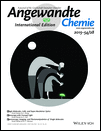An Operationally Simple Method for Separating the Rare-Earth Elements Neodymium and Dysprosium†
E.J.S. acknowledges the U.S. Department of Energy, Office of Science, Early Career Research Program (Grant DE-SC0006518), the Research Corporation for Science Advancement (Cottrell Scholar Award to E.J.S.), and the University of Pennsylvania for financial support of this work. We thank Dr. Andrew J. Lewis for helpful discussions.
Graphical Abstract
Reuse and recycle: A tripodal nitroxide ligand is used in the separation of Nd and Dy and gives good recoveries from Nd/Dy(OTf)3 mixtures. The separation factor SNd/Dy=359 achieved is an improvement over conventional separation methods involving liquid–liquid extractions. This method will contribute to incentivizing recycling of Nd/Dy permanent magnetic materials.
Abstract
Rare-earth metals are critical components of electronic materials and permanent magnets. Recycling of consumer materials is a promising new source of rare earths. To incentivize recycling there is a clear need for simple methods for targeted separations of mixtures of rare-earth metal salts. Metal complexes of a tripodal nitroxide ligand [{(2-tBuNO)C6H4CH2}3N]3− (TriNOx3−), feature a size-sensitive aperture formed of its three η2-(N,O) ligand arms. Exposure of metal cations in the aperture induces a self-associative equilibrium comprising [M(TriNOx)thf]/ [M(TriNOx)]2 (M=rare-earth metal). Differences in the equilibrium constants (Keq) for early and late metals enables simple Nd/Dy separations through leaching with a separation ratio SNd/Dy=359.





